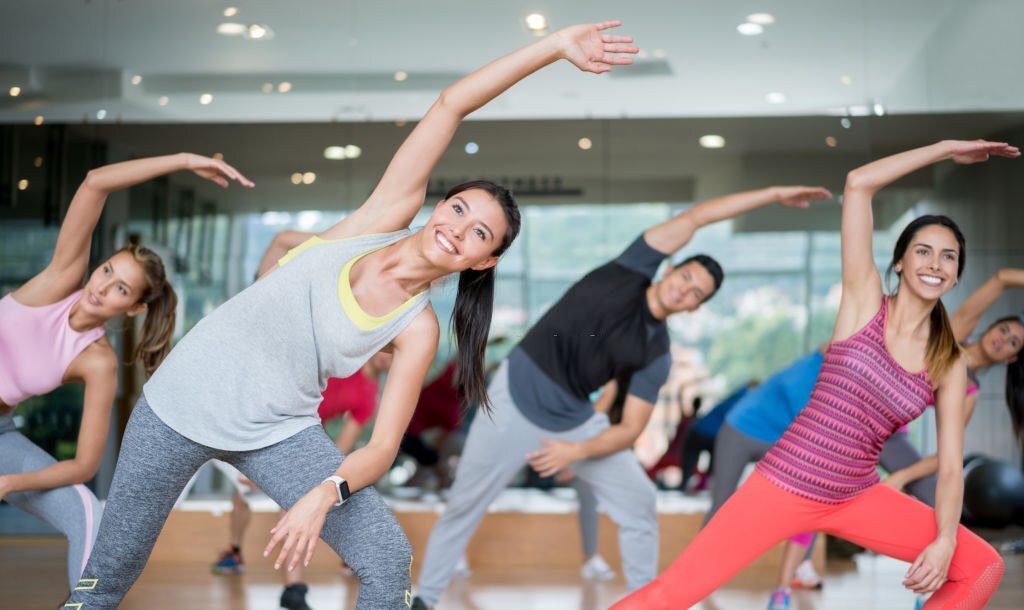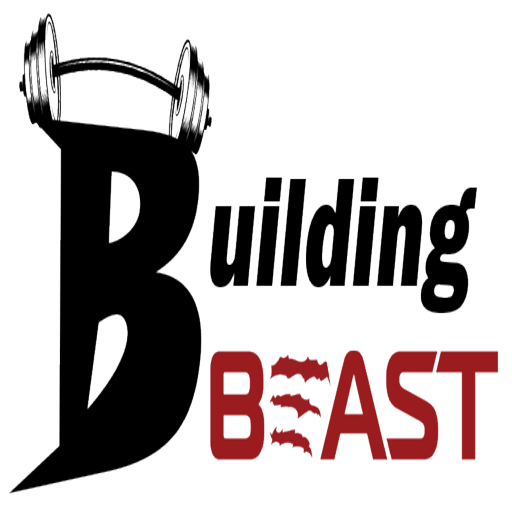Aerobic exercise is one of the most effective and efficient ways to improve your overall health and fitness levels. Whether you are looking to lose weight, build strength, increase endurance, or simply improve your cardiovascular health, regular aerobic exercise can help you achieve your goals.
In this comprehensive guide, we will explore the many benefits of aerobic exercise and provide you with tips, techniques, and strategies for getting the most out of your workout regimen. Whether you are just starting out or are a seasoned fitness enthusiast, this guide is designed to help you maximize your results and achieve your goals.
What is Aerobic Exercise?
Aerobic exercise, also known as cardiovascular exercise, is a type of physical activity that is designed to improve your cardiovascular health and endurance. This type of exercise is characterized by sustained, rhythmic movements that increase your heart rate and challenge your cardiovascular system.
Examples of aerobic exercise include running, jogging, cycling, swimming, and rowing. When you perform aerobic exercise, your muscles require a steady supply of oxygen to produce energy, which is why this type of exercise is referred to as “aerobic”.
Benefits of Aerobic Exercise
There are numerous benefits to incorporating regular aerobic exercise into your routine. Some of the most notable benefits include:
- Improved Cardiovascular Health: Regular aerobic exercise has been shown to reduce the risk of heart disease, stroke, and other cardiovascular conditions. This is because aerobic exercise helps to improve blood flow and circulation, which can help to lower blood pressure and cholesterol levels.
- Increased Endurance: By challenging your cardiovascular system on a regular basis, you can improve your overall endurance and ability to perform physical activity for longer periods of time. This can be especially beneficial for athletes or individuals who participate in physically demanding activities, such as hiking or cycling.
- Weight Loss: Aerobic exercise is one of the most effective ways to lose weight and maintain a healthy weight over time. By burning calories and increasing your metabolism, you can shed excess pounds and improve your overall body composition.
- Improved Mental Health: Regular aerobic exercise has been shown to reduce symptoms of depression and anxiety, and can also help to improve your overall mood and sense of well-being. This is likely due to the release of endorphins, which are natural mood-enhancing chemicals, during aerobic exercise.
- Reduced Risk of Chronic Diseases: Aerobic exercise has been shown to reduce the risk of chronic diseases such as heart disease, stroke, and diabetes. By improving your cardiovascular function and reducing inflammation, aerobic exercise can help to lower your risk of these conditions.
To know more about the benefits of aerobic exercises. Follow this guide.
Understanding Aerobic Exercise

Aerobic exercise, also known as cardio, is any physical activity that increases your heart rate and breathing for a sustained period of time. This type of exercise helps to improve your cardiovascular function, strengthening your heart and lungs, and increasing the delivery of oxygen and nutrients to your muscles.
Types of Aerobic Exercise
There are many different types of aerobic exercise, each with its own set of benefits and challenges. Here are a few of the most popular:
- Running
Running is one of the simplest and most accessible forms of aerobic exercise. Whether you prefer to run on a treadmill, in a park, or on a trail, running can be a great way to improve your cardiovascular health and burn calories. Running also has a low risk of injury compared to other forms of exercise. - Cycling
Cycling is another great form of aerobic exercise that can be performed indoors or outdoors. It is an excellent form of low-impact exercise that is easy on your joints, making it a great option for people with joint pain or injury. Cycling is also a great way to improve your endurance and strengthen your lower body muscles. - Swimming
Swimming is a full-body workout that provides numerous benefits, including improved cardiovascular function, strength, and flexibility. Swimming is a low-impact form of exercise, making it an excellent option for people with joint pain or injury. Additionally, swimming provides a challenging workout that can be adjusted to match your fitness level. - Dancing
Dancing is a fun and engaging form of aerobic exercise that can be performed alone or with others. Dancing can be performed in a wide range of music styles and can be an excellent way to improve your cardiovascular health and coordination. Dancing is also a great way to burn calories and have fun at the same time.
Incorporating Aerobic Exercise into Your Routine
Incorporating aerobic exercise into your daily routine can be as simple or complex as you prefer. Here are a few tips to get started.
- Start Small
If you are new to aerobic exercise, it is important to start small and gradually increase the intensity and duration of your workouts over time. This will help you avoid injury and increase your chances of sticking with your workout routine in the long term.
- Set Realistic Goals
Setting realistic goals for your aerobic exercise routine is important for staying motivated and on track. This may involve setting a goal for the number of days per week you want to exercise, the duration of each workout, or the number of calories you want to burn.
- Find an Activity You Enjoy
Finding an aerobic exercise that you enjoy can make it easier to stick with your routine. Whether it’s running, cycling, swimming, or dancing, finding an activity that you enjoy can help to make your workout routine feel more like fun and less like work.
- Mix It Up
Mixing up your aerobic exercise routine can help to prevent boredom and keep your workouts interesting. This may involve trying different types of aerobic exercise, changing up your workout routine, or incorporating new activities into your routine.
- Get a Workout Partner
Having a workout partner can help to keep you accountable and motivated. This can be especially helpful if you have a hard time sticking with your workout routine on your own.
FAQs
You can ask your queries to our professional trainers. Visit this page to ask your queries.
- Is Aerobics Good for Weight Loss?
Yes, aerobics can be an effective tool for weight loss. Aerobic exercise helps to increase heart rate, burn calories, and increase metabolism. This, in turn, can lead to weight loss over time. However, it is important to note that weight loss also depends on factors such as diet and overall lifestyle habits.
- Aerobic vs Anaerobic Exercise
Aerobic exercise involves sustained physical activity that increases heart rate and breathing. This type of exercise is typically low to moderate in intensity and performed for longer durations. Examples of aerobic exercise include running, cycling, and swimming.
Anaerobic exercise, on the other hand, is a high-intensity exercise that is performed in short bursts. This type of exercise involves activities such as weightlifting, sprinting, and high-intensity interval training (HIIT).
While both types of exercise are important for overall fitness and health, the specific benefits they provide can vary. Aerobic exercise is typically better for improving cardiovascular function and endurance, while anaerobic exercise is better for building strength and power.
It is important to incorporate both aerobic and anaerobic exercise into your fitness routine in order to achieve overall physical fitness and health.
- What are 5 Examples of Aerobic Exercise at Home?
Here is a brief explanation of 5 examples of aerobic exercise that can be done at home:
- Jogging or running: This is a simple but effective form of cardio that can be done in the comfort of your own home. All you need is enough space to move around and you can start jogging or running in place to increase your heart rate and burn calories.
- Jumping jacks: This classic aerobic exercise involves jumping with your feet spread apart and then back together while simultaneously raising and lowering your arms. Jumping jacks are a fun and easy way to get your heart rate up and work your entire body.
- High-knee marching: This exercise involves marching in place, but with a twist – lifting your knees as high as you can with each step. High-knee marching is a great way to increase the intensity of your cardio and work your legs, core, and arms.
- Mountain climbers: This exercise involves starting in a push-up position and then alternating bringing each knee to your chest in a running motion. Mountain climbers are a great full-body exercise that gets your heart rate up and works your legs, arms, and core.
- Burpees: This challenging exercise involves starting in a standing position, dropping down into a push-up position, then jumping back up to a standing position. Burpees are a great way to increase the intensity of your cardio and work your entire body, making them a great choice for an at-home aerobic workout.
Conclusion
Aerobic exercise is one of the most effective ways to improve physical fitness and overall health. It provides numerous benefits, such as reducing the risk of chronic diseases, improving cardiovascular function, and boosting mental health. Whether you are a beginner or a seasoned athlete, incorporating aerobic exercise into your daily routine can help you reach your fitness goals and improve your overall health and well-being.







